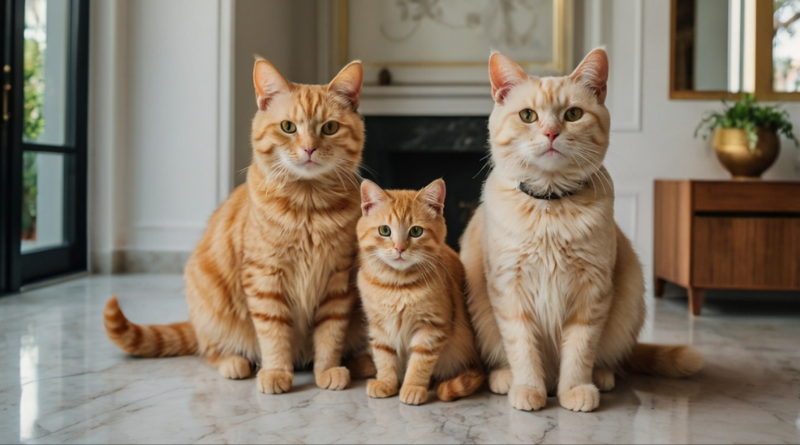Owning multiple pets is a joy that brings endless love and companionship, but it can also be a challenge. From maintaining harmony among pets to ensuring their individual needs are met, effective management is key. Here are practical steps to help you learn how to manage multiple pets at home successfully.
Understanding Each Pet’s Needs
Each pet is unique, with its own personality, dietary requirements, and exercise needs. Taking the time to understand these differences is crucial:
- Dietary needs: Feed pets according to their species, breed, and health conditions. Cats and dogs, for instance, have different nutritional requirements. Birds, reptiles, and small mammals each have their specific dietary needs that must be met to keep them healthy and happy.
- Behavioral traits: Observe their temperament. Some pets may prefer solitude, while others are more social. Knowing these traits can help you manage their interactions better.
- Health care: Schedule regular veterinary check-ups for all pets to keep them healthy and updated on vaccinations. Additionally, learn to recognize signs of illness unique to each species to ensure timely medical intervention.
Creating a Harmonious Environment
To ensure all pets live comfortably together, the environment should cater to their needs:
- Separate spaces: Provide designated areas for eating, sleeping, and relaxing to minimize territorial disputes. For instance, cats might need high perches or separate rooms to feel secure, while dogs might require their own beds.
- Shared playtime: Engage in group activities to strengthen bonds among pets, but supervise to prevent conflicts. This could include joint walks for dogs, interactive play for cats, or communal feeding times for small animals.
- Safe zones: Offer private spaces where each pet can retreat if they feel overwhelmed. This is especially important for more timid pets who need a sanctuary from more dominant or active companions.
Maintaining Routine and Consistency
Pets thrive on routine. Keeping a consistent schedule for feeding, walking, and playtime helps them feel secure. Additionally:
- Avoid favoritism: Give equal attention to each pet to prevent jealousy. Spend quality time individually with each pet to strengthen your bond with them.
- Training: Reinforce good behavior with positive reinforcement techniques. Consistent training can help manage behavior and reduce conflicts.
- Monitoring interactions: Be vigilant about their interactions, especially during initial introductions. Gradual introductions can help prevent stress and aggression.
Handling Conflicts
Conflicts can arise in multi-pet households. Addressing issues promptly can prevent escalation:
- Identify triggers: Recognize situations that lead to aggression or stress. This can be anything from competition for resources to sudden changes in the environment.
- Seek professional help: Consult an animal behaviorist if conflicts persist. Professional guidance can offer tailored strategies to resolve issues.
- Redirect behavior: Use toys or commands to distract pets during tense situations. Providing mental stimulation and enrichment can also reduce conflict.
The Importance of Health and Hygiene
A clean environment is vital for the health of all your pets:
- Regular cleaning: Clean litter boxes, cages, and bedding frequently. This helps prevent the spread of disease and keeps the living environment pleasant.
- Grooming: Brush fur, trim nails, and bathe pets as needed. Regular grooming not only keeps pets looking their best but also helps monitor their health.
- Pest control: Protect against fleas, ticks, and other pests with veterinarian-approved treatments. Maintaining regular pest control measures is crucial in a multi-pet household.
Enriching Their Lives
Beyond basic care, providing mental and physical stimulation is essential for the well-being of your pets:
Social interactions: Encourage socialization with other pets and humans. Positive experiences can help reduce anxiety and increase their confidence.healthy home for all your furry friends. Remember, the effort you put into their well-being is rewarded with unconditional love and joy.
Interactive toys: Invest in toys that challenge their minds and encourage physical activity. Puzzle feeders, climbing structures, and safe chew toys are great options.
Outdoor time: If safe and suitable, allow pets to explore the outdoors under supervision. This can be achieved through secure enclosures or on a leash for those comfortable with it.
For more expert tips and advice, visit trusted resources like the American Veterinary Medical Association or PetMD.

